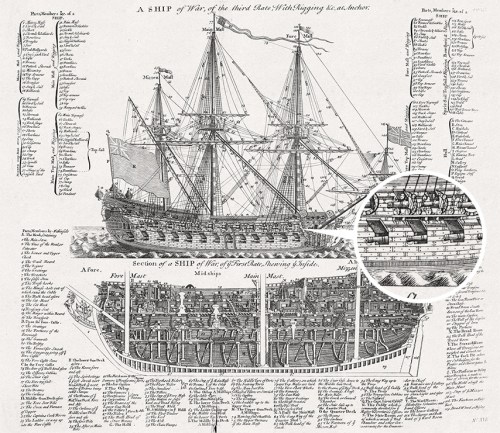As an author and writer, I do a LOT of research. I love history particularly, but then I could say the same thing about the topics of geology, astronomy, archaeology, science and technology, crafting, drawing, botany, and a dozen others. As I apply my studies to my work, I am sometimes faced with the issue of horns – Viking helmet horns.

Accurate Viking helmet, reproduction. Photo credit, Pinterest, unknown
While everyone seems to accept as a historically proven fact that Viking helmets had horns, the actual fact of the matter is that they didn’t. While there were many horned helmets dating to before the rise of the Norse powers of Sweden, Norway and Denmark, most, if not all, were for religious or ceremonial purposes. However, if I write a description of a Norse helmet and leave off the horns, someone will inevitably point it out.
Recently I spent a couple hours on Skype with one of my Beta readers for my current project, the third book in the Northing Trilogy (set in 18th century England). Several of her comments were based on her knowledge of the 19th century as portrayed by Georgette Heyer, while others were based on her lack of historical knowledge that I, as the author, have amassed over time. While some of that knowledge needs to seep into my writing to help the reader along, I have to continually remind myself (especially with this particular book in the trilogy, as it is centred around the Royal Navy) that I am not writing a history book but a novel, and anything I include needs to support the plot – the plot should never be forced to support a history lesson. So it is that questions arose as to the behaviour and manners of the children of the time.
In any time period up until the mid-20th century, children in western societies matured far sooner than their modern counterparts, both out of necessity and out of cultural understanding of their roles in society. Many families were dependent on the contribution made by the children in their household, whether it was housework, factory work, or working on the streets as beggars, shoe shiners, chimney sweeps, street sweepers, selling newspapers, or any other job they could earn money with (this is still true in many poorer countries of the world today).
If they came from a wealthy family, children were educated, but as to what extent and to which form it took very much depended on their particular circumstances: They were educated either at home by tutors, or sent away to a boarding school. Leaving school might be anywhere between ten and twenty; Jane Austen finished her formal education at the age of 10 or 11, whereas Charlotte Brontë’s character Jane Eyre left school at 18. Boys who were second sons were often educated (after their basic education in either a college or at home) toward the military or toward a life as a minister (if their families held a high status in society, they might be trained toward politics; first-born sons, heirs, were rarely sent to the military due to the inherent dangers).

Henry William Baynton, aged 13 years, 6 months, midshipman on the Cleopatra. Photo Credit, Wikipedia.
If their fathers could afford to do so, these younger sons were often bought commissions in the military so that they would start off their career with some smidgen of position, such as a midshipman in the Royal Navy; the younger they entered, the sooner they could rise through the ranks, and thus it was not uncommon for lads of 7 or 8 to enter the navy. Aboard ship they were trained in various skills, which included not only practical skills to do with the day-to-day running of the ship, but how to read navigational charts and how to use instruments such as sextants. How fast or slow they rose to higher ranks thereafter depended on their skills, intelligence, connections, and luck.
If poor children were either abandoned or given to workhouse orphanages because their families could not afford to keep them alive, they were also trained: The girls were trained toward becoming servants (paying back society for the privilege of being alive), and the boys were trained for a life in the military (ditto). They were taught to read using the Bible, and were expected to live by its principles. Unfortunately, religion was often used as a guise for abuse and heavy-handed tyranny, but as the characters in Jane Eyre portrayed, some were true Christians in their behaviour toward her, such as her friend Helen, or the kind apothecary. If the girls were going to become governesses, they would also be trained in more refined accomplishments such as French, drawing, needlework, history, etc.
All of this is to say that, were I to include all of this kind of information in a novel (and believe me, there’s a lot more where that came from!), it would get boring rather quickly. And so I need to pick and choose what is used in the organic flow of the plot and character development that both serves those elements and also helps inform the reader; sometimes it’s a tricky balance. So when the 11-year-old boy acts far more mature than a modern boy, unless the reader is aware of the historical context, I will inevitably get feedback to that effect. Sometimes I can help their understanding by including e.g. the subjects he might be learning with his tutor, such as French, sciences, or elocution, but more than that might drag the story into the realm of a history lesson.
There are many modern myths, like the Viking horns, that people have accepted as historically accurate, when in fact they’re not. One of my pet peeves is Christmas films that inevitably portray three kings showing up at the manger along with the shepherds in Bethlehem. I won’t go into that here – if you’re interested in the historical details, read my article on History Undusted, here. Other urban legends include: We only use 10% of our brains; the full moon affects our behaviour; lightning never strikes the same place twice; cracking your knuckles gives you arthritis, and antibiotics kill viruses. If I rankled any feathers there, or you said to yourself, “But that one is actually true,” then I would suggest you do your own research on the issue… I’ve got my plate full at the moment with the 18th century.
Save
 Recently I was watching a history documentary series from BBC called, “British History’s Biggest Fibs”, with Lucy Worsley. The basic point of the series is that history is subjective; whoever wins gets to name the battles, and shape future generations’ perceptions about events; the victor gets to smooth over their own weak points and play up their heroism for posterity. PR and spinning a good yarn helped to shape how reigning kings were perceived and toppled, or usurpers could style themselves as “successors”.
Recently I was watching a history documentary series from BBC called, “British History’s Biggest Fibs”, with Lucy Worsley. The basic point of the series is that history is subjective; whoever wins gets to name the battles, and shape future generations’ perceptions about events; the victor gets to smooth over their own weak points and play up their heroism for posterity. PR and spinning a good yarn helped to shape how reigning kings were perceived and toppled, or usurpers could style themselves as “successors”. In this illustration from Marvel’s Avengers film series, the camera angle chosen gives much more of an adrenaline rush than, say, if you were passively watching from off to the side; the fact that the arrow’s flying straight at you gives the scene that extra “kick”.
In this illustration from Marvel’s Avengers film series, the camera angle chosen gives much more of an adrenaline rush than, say, if you were passively watching from off to the side; the fact that the arrow’s flying straight at you gives the scene that extra “kick”.






